Results 2,421 to 2,430 of 12096
Thread: Anandtech News
-
12-06-12, 04:00 PM #2421
Anandtech: iPad 4 (Late 2012) Review
For years, almost a decade in fact, we've been asking for higher quality displays in notebooks. With most of our pleas left ignored for the value notebook segment, smartphone and eventually tablet makers capitalized on the opportunity. These days the $399 - $499 tablet display experience tends to be superior to the $399+ notebook experience. Things are beginning to change, but not quite fast enough. At the forefront of driving tablet display performance is Apple with its Retina Display equipped iPad. While the company has never really competed in the low-cost notebook or netbook market directly, the iPad has been Apple's solution for consumers who want a computer at a $500 - $700 price point. By focusing on areas that have been neglected by PC makers in the past (e.g. display, wireless connectivity, ease of use), Apple has managed to be quite successful in this space with the iPad.
As a big part of its overall strategy, Apple has done a good job of issuing regular updates to the iPad family since its initial unveil in 2010. Now, just seven months after the release of the 3rd generation iPad, Apple followed up with a 4th generation model. It's the relentless execution cycle in addition to focusing on the integration of high quality tangibles like the display that has made the iPad a formidable competitor in the $500 - $700 consumer computing space. 
Read on for our full review of the 4th generation iPad.

More...
-
12-06-12, 09:30 PM #2422
Anandtech: ARCHOS GamePad Introduced: 7" Gaming Tablet with Hardware Controls
Sometimes it's easier to take risks, if you aren't moving quite so many units. ARCHOS, long a player in media playback devices has spent a few years exploring Android tablets and we've put them through their paces. Their last offering was the remarkably thin 101 XS, with its impressive keyboard cover. The ARCHOS GamePad takes a rather different turn. One part tablet, one part portable game system, the GamePad brings hardware gaming controls and is available now for just 149.99 EURO, with a US release in Q1 '13. 
 
Arranged in landscape mode, the GamePad's 1024 x 600 screen resolution isn't going to light the world on fire, but paired with the ARM Mali-400 GPU it should provide excellent frame rates. We've seen a lot of TI silicon in the last several ARCHOS tablets, so it was a surprise to see the processor go unnamed. We're still digging to find more details, but it's described as a 1.6 GHz dual-core processor, with the aforementioned Mali-400 GPU. Given the last gen nature of the GPU, I imagine that the application processor is most likely of the ARM Cortex-A9 variety, somewhat similar to a higher clocked Samsung Exynos 4210. 
 
On the software front, this will be the first Jelly Bean tablet we've seen from ARHOS. Their software engineers have no doubt pushed themselves to the brink to bring the same media-centric features we've come to expect to, not just a new Android version, but also a new SoC. They've built a scheme for mapping the hardware buttons to soft buttons in games that aren't compatible with gamepads. 
So, is tablet gaming ready for a more dedicated device than we've seen in the past? We'll certainly be glad to find out. 

More...
-
12-07-12, 12:30 PM #2423
Anandtech: Another Update Samsung SSD 840/840 Pro Failures
We've been covering the issues surrounding Samsung's SSD 840/840 Pro lately. The issue was first discovered when Anand's pre-production review sample died during testing and we also noted that in our initial review. Samsung quickly sent us another drive but it also failed after a couple of days of testing. My SSD 840 managed over a month but ironically enough, it died right after I had completed endurance testing.
Earlier Samsung told us that all review samples including our three shipped with a pre-production firmware that had a bug in it causing the failures (retail units were shipped with a newer firmware without the bug). At the time we didn't know what exactly was wrong in the firmware, but now we do. When the drive was issued a secure erase command, it would clear all table mapping information at the Address Translation Layer (ATL) but not at the Host Interface Layer (HIL). The data in both layers needs to be up-to-date for the drive operate properly, so when a write request came in, the controller wasn't able to map the data correctly, which caused the firmware to hang. An SSD obviously can't operate without a functioning firmware so from a user's standpoint, it looked like the drive had completely died even though only its firmware was broken.
All our three failures support this explanation. Our first 840 Pro sample died during a 128KB sequential write pass that we use to pre-condition our drives for enterprise tests, but the drive was secure erased just before beginning to fill the drive. The second 840 Pro died during power consumption testing but again it was secure erased right before starting the test. The regular 840 actually died when I tried to secure erase it. The secure erase command resulted in an error so I power cycled the drive but it was no longer detected by the system after reconnecting it. 
The good news is that all retail units have shipped with a newer firmware, only reviewers and others who have access to pre-production units were affected by this bug. Comparison of Samsung SSD Firmware Versions   Pre-Production Retail Samsung SSD 840 Pro DXM02B0Q DXM03B0Q Samsung SSD 840 DXT05B0Q DXT06B0Q
For users considering the SSD 840/840 Pro, this should be reassuring news. The 840 Pro is still the fastest SATA 6Gbps SSD we have tested and it's definitely one of the top choices where performance is concerned today. The TLC NAND based SSD 840 is more mainstream focused but from what I have seen, it seems to be fairly competitively priced. The SSD 830 spoiled many with low prices but that was only to clear stocks. If you can still find a bargain SSD 830, don't hesitate to pull the trigger as those won't be available much longer, but we're more comfortable recommending the 840/840 Pro now.
While long-term reliability is still unknown, if history is any indication the 840/840 Pro are in good company as the 830 was a solid drive. Our third 840 Pro with the new fixed firmware has been going strong for weeks now and we have even recreated the scenarios that killed the earlier samples. We are also waiting for more samples from Samsung to test all capacities of SSD 840 and 840 Pro, so stay tuned!

More...
-
12-10-12, 02:30 AM #2424
Anandtech: Workstation Buyer's Guide
Though mobile devices continue to consume more computing marketshare at the expense of traditional desktop PCs, phones and tablets, and to an extent even laptops, simply cannot compete with desktops for getting work done. Workstation productivity systems aren't particularly sexy like powerful gaming computers or svelte small form factors HTPCs, but very few people earn a living playing games or watching movies.
The systems outlined in this guide are built to produce, not to consume. Whether you're interested in producing and editing HD video content, prosumer-grade photography work, financial data analysis, scientific computing, or something else, you need a desktop computer. In this guide we outline three productivity machines at a range of prices, featuring the latest CPUs from both Intel and AMD.

More...
-
12-10-12, 02:00 PM #2425
Anandtech: Plextor Updates The Firmware on M5 Pro: Promises Increased Performance, We
Plextor released their M5 Pro SSD in August, which we reviewed shortly after the release. Now nearly four months later, Plextor has released an updated firmware (v1.02) for the M5 Pro that promises performance improvements. The M5 Pro with the original firmware did well in our tests but there was still room for improvement as the difference between the M5 Pro and the older M3 Pro was not magnificent. With the new firmware, Plextor is claiming up to 100K random IOPS and also increased sequential write speeds. Read on to find out how the updated M5 Pro stacks up with the current speed kings: Samsung's SSD 840 Pro and OCZ's Vector!

More...
-
12-10-12, 11:30 PM #2426
Anandtech: MSI FM2-A85XA-G65 Review: Know Your Platform
The A85X chipset and FM2 socket is supposedly here to stay for Trinity plus one more generation.  As a result, AMD needs to make sure that the platform is right so that the new processors can slot straight in (whenever that may be).  While they may have missed the ship on PCIe 3.0 (despite AMD pioneering it on the GPU side), we do get a tasty array of eight SATA 6 Gbps ports from the chipset with RAID 5 support and a promise that the integrated graphics part of the APU is powerful.  In the next installment of our series of FM2/Trinity motherboard reviews, MSI sent us their top line motherboard to test.  The FM2-A85XA-G65, while a rather lengthy classification, is a full sized ATX motherboard using the FM2 chipset in an MSI Military Class black and blue theme.  At a mid-pack price of $100, MSI gives us the full eight FM2 SATA 6 Gbps ports, 5 fan headers, a full array of video outputs, and special features such as voltage read points and an OC Genie button.  Read on for the full review.

More...
-
12-11-12, 01:00 AM #2427
Anandtech: LG 29EA93 Ultrawide Display - Missing its Target
When migrating away from 4:3 screens for home video, the 16:9 aspect ratio was chosen as a compromise between all the common formats at the time. For many film fans, this meant finally being able to watch movies in their original aspect ratio without putting up with black bars. However many films are shot using aspect ratios even wider than 1.78:1, such as 2.20 for 70mm film or 2.39 for modern cinemascope films. While the letterboxing of these titles was improved over 4:3 sets on new 16:9 sets, the black bars remained. Now we are starting to see panels that also address this audience, including the LG 29EA93 21:9 LCD monitor.
While cinephiles may rejoice, traditional computer users might be wondering if this makes any sense for a desktop display. There is still a lot of resentment over the transition from 16:10 to 16:9 displays, as the loss of vertical space means less room for word processing documents, spreadsheets, and other data, even if it might be slightly more ideal for HDTV. If the layout of many operating systems and programs hasn’t adapted yet to properly utilize 16:9, what will using 21:9 be like? Is the LG 29EA93 a one trick pony for those that want to watch scope films, or does it serve a larger purpose as well?

More...
-
12-11-12, 10:00 PM #2428
Anandtech: Intel Launches “Centerton” Atom S1200 Family, First Atom For Servers
In recent months much has been made over the potential incursion of ARM into Intel’s tightly held server markets, and for good reason. ARM’s general focus on SoCs for consumer devices like phones and tablets has treated the company and its partners well over the past few years, but with continued upwards and outwards growth of the ARM ecosystem, ARM and its partners have been looking to expand into new markets. With that in mind they have turned their eyes towards servers, a somewhat small but very lucrative market that offers much greater profitability than the cutthroat consumer space.
ARM’s leading edge partners like Calxeda have already been toying with the concept, creating a new class of microserver based around utilizing many ARM cores to create a high density, highly threaded server with weak per-thread performance but strong overall performance, an ideal setup for shared hosting and other subsets of sever workloads. Of course ARM’s existing 32bit ARMv7 designs can only go so far, leading to ARM taking a more direct shot across Intel’s bow with the announcement of their new 64bit ARMv8 ISA and parts such as Cortex A57. ARM and their partners believe in the potential of the microserver concept, and ARMv8 will be the ISA that lets them seriously chase the concept. But before they can get that far they must face the 800lb gorilla of the server world: Intel.
Intel for their part jealously guards the server market, looking to hold onto those profitable markets that have driven Intel’s own growth and phenomenal profits. Though Intel’s primary focus has continued to be on their Core architecture derived server parts, the company has also flirted with the concept of microservers, with ex-partner (and now AMD subsidiary) SeaMicro building one of the first server businesses based around Intel’s Atom processors. SeaMicro may be gone now, but Intel has continued to work on the technology, and with ARM drumming up interest in microservers ahead of their entrance to the market next year, Intel will be making the first move.
To that end, today Intel is launching the Atom S1200 series, Intel’s first Atom processors designed specifically for the server market. Previously going by the codename Centerton, the Atom S1200 series is based around Intel’s existing 32nm Saltwell architecture, utilizing Intel’s low-power SoC-ready CPU cores in a new design better suited for the server market.
Centerton is for the most part very similar to Intel’s existing 32nm Cedarview Atoms, operating with a pair of Saltwell cores at between 1.6GHz and 2GHz depending on the specific SKU. The key difference however is that Centerton supports a bevy of server-grade features that the consumer-focused Cedarview did not; Centerton adds support for Intel’s VT virtualization technology, 4 more PCIe lanes (for a total of 8), and most importantly support for ECC memory. Though Intel has not confirmed it, coupled with the fact that Centerton uses a new socket (FCBGA1283), we believe that Centerton is a new Atom design rather than just being a server-branded version of Cedarview. In any case Centerton represents a big step up for Intel in the server market by finally offering an Atom-level processor with the ECC support that server vendors need to offer sever-grade reliability.
The Atom S1200 family will be composed of 3 parts, the S1220, the S1240, and S1260.
As implied by the model number, the S1220 will be Intel’s entry-level part, clocked at 1.6GHz with an 8.1W TDP. Beyond that the family splits a bit. The S1240 will be Intel’s lowest-power part and the part most directly designed to take on ARM designs, clocked at 1.6GHz like the S1220 but operating a full 2W lower at 6.1W. Finally the S1260 will be Intel’s top-performance part, operating 25% faster at 2Ghz with the highest TDP at 8.5W. All of these parts are shipping today; Intel hasn’t given us the specific prices, but pricing starts at $54, presumably for the S1220.Intel Atom Lineup Model S1220 S1240 S1260 D2700 Codename Centerton Centerton Centerton Cedarview Core/Thread Count 2/4 2/4 2/4 2/4 Frequency 1.6GHz 1.6GHz 2.0GHz 2.13GHz L2 Cache 1MB 1MB 1MB 1MB Max Memory 8GB 8GB 8GB 4GB Supported Memory DDR3-1333 DDR3-1333 DDR3-1333 DDR3-1066 ECC Yes Yes Yes No VT-x Yes Yes Yes No PCIe 2.0 Lanes 8 8 8 4 TDP 8.1W 6.1W 8.6W 10W
For their part Intel is looking to head off any ARM incursion into servers by not only being the first CPU vendor to release micro/high-density server CPUs with 64bit support and ECC support, but they also intend to hold off ARM by leveraging the existing x86 software ecosystem and software compatibility with their Xeon processors.  This also means that Intel has been able to tap their existing partner network, having secured design wins from Dell, HP, Supermicro, and others. For Intel’s customers this makes the S1200 effectively a continuation of Intel’s existing technology, which can make adoption easier than having to jump to a completely new platform with ARM.
As far as performance goes it will be some time until we have a good idea of how ARM-based processors stack up against the S1200 series, but Intel and HP have already released some generalized performance data comparing the S1200 series to Xeons. As expected, performance is going to be heavily dependent on the nature of the workload, with the S1200 designed for and exceling at heavily threaded, simple tasks, while coming up short in lightly threaded scenarios that need bigger, faster cores. Given the relatively low pricing of these processors, it will be in Intel’s interests to ensure that they are complementary to their existing Xeon processors and not significantly competitive.
Ultimately there is clear customer interest in servers designed to efficiently handle highly-threaded/low-intensity workloads, and with the Atom S1200 series Intel finally has a server-grade product capable of meeting the needs of that market. At the same time microservers are just but one segment of the complete server market and for the foreseeable future Intel’s traditional Xeon processors will remain as Intel’s biggest source of server revenue, but with the ever-increasing emphasis on power efficiency this is not something Intel could have afforded to pass up.
Meanwhile by launching first Intel will get to set the stage for the micro/high-density server market.  The Atom S1200 series is far more important for Intel than just a defense against an ARM incursion into the server market, but at the end of the day that may just be the most important role it plays. ARM has shown that they are a capable competitor, and in turn Intel will need to show why they are called the 800lb gorilla of CPUs.
2013: Avoton and Beyond
Wrapping things up, along with the announcement of the Atom S1200 series, Intel also released a very general roadmap of where they intend to take their new server CPU segment. Centerton is not just a one-off product, but rather the first product in a new range of server CPUs.
In 2013 Intel will release Avoton, Centerton’s successor and based on Intel’s 22nm process. Based on Intel’s previous roadmaps we know that 22nm is also supposed to coincide with the launch of Intel’s new Silvermont architecture, so it’s reasonable to assume that Avoton will be Intel’s Silvermont-based processor for servers. Processors based on the ARMv8 ISA are not expected to launch until late in the year, so it’s possible that ARM and its partners will be going up against Avoton rather than Centerton/S1200.
Beyond that, Intel is also planning a 14nm successor to Avoton in 2014. If Intel finds success in the S1200 series, then this will setup the S1200 series and its successors to be the second prong of Intel’s server CPU offerings, similar to the relationship between Core and Atom today in the consumer space. With the forthcoming release of Haswell we have seen signs that Intel is intending to push Core into some of the space currently occupied by Atom, but all the same this two-pronged approach has worked well enough for Intel’s consumer CPUs, and is something Intel is clearly going to try to replicate in the server space.

More...
-
12-12-12, 03:32 AM #2429
Anandtech: Holiday 2012 Ultrabook and Ultraportable Guide
We’ve provided some buyer’s guides for system builders so far, but today we’re going to ditch the DIY sector and instead look at pre-built laptop options, with a focus on Ultrabooks and other ultraportables. Not everyone needs or even wants an ultraportable, so we recognize that the recommendations here are for a specific subset of users, but if you’re looking for something highly portable and you don’t mind paying a bit more for quality, we have some suggestions.

More...
-
12-12-12, 10:00 PM #2430
Anandtech: Dell Precision M6700 Notebook Review: The Enterprise Split
When you think about it, the enterprise workstation market really only has three key players. You have HP, who produce some excellent mobile workstations but have been stagnating horribly on the desktop side. You have Dell, who produce what are in my opinion the best desktop workstations but seem to be substantially less exciting on the notebook end. And you have Lenovo, who excels in neither discipline but offers a fairly balanced portfolio in exchange. This presents a problem, and it's a problem we're looking at today.
What we really want and need is a single vendor to order notebooks and desktops from and be able to call it a day. While HP's desktops aren't bad, they're overpriced compared to Dell's offerings. Today we have the updated Dell Precision M6700 on hand, a robust notebook featuring a full sRGB IPS panel with user-configurable gamma, a Kepler-based workstation GPU, and Intel's Ivy Bridge quad core processor. But with workstations it's not just about the internals, it's about the design and the experience. Did Dell come up with a worthy competitor to HP's EliteBooks, or did they just come up short?

More...
Thread Information
Users Browsing this Thread
There are currently 10 users browsing this thread. (0 members and 10 guests)








 Quote
Quote
.jpg)
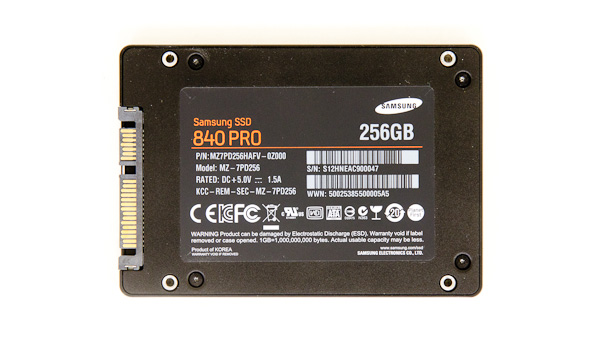
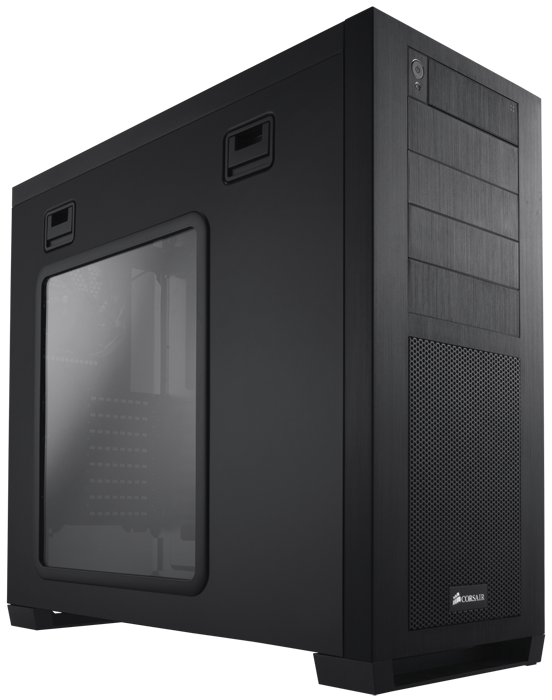
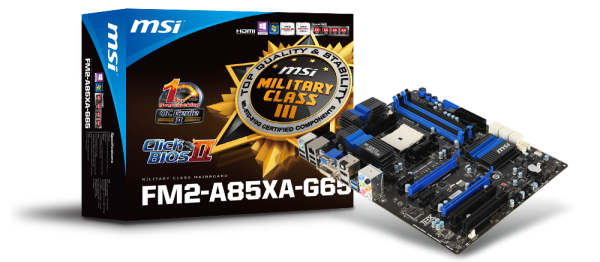
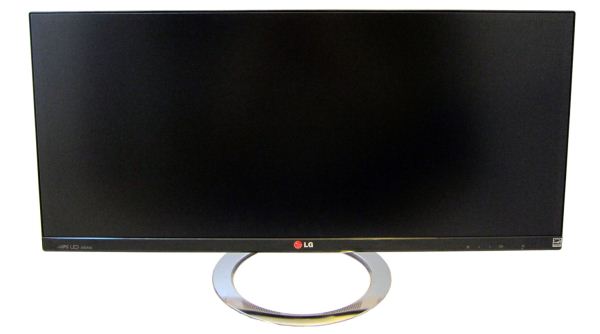

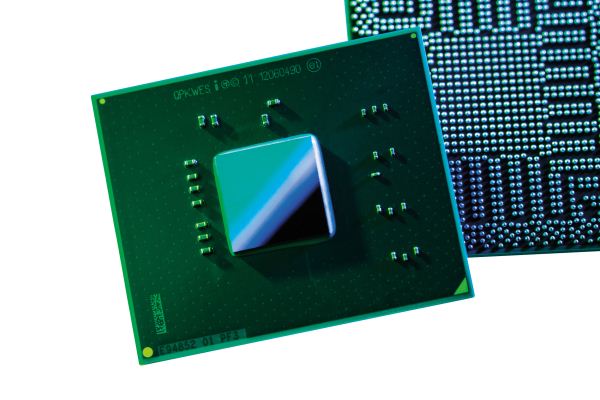
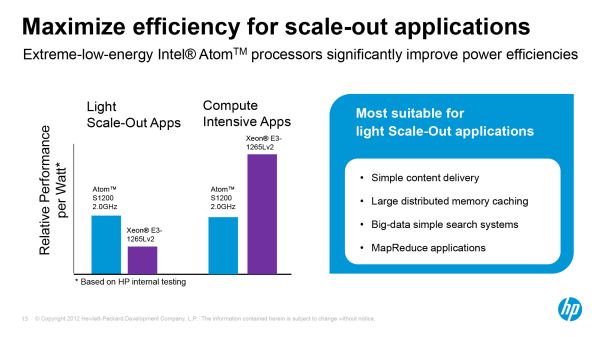
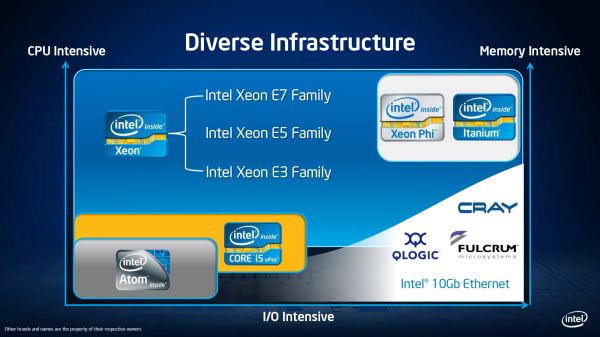


.jpg)
















Bookmarks